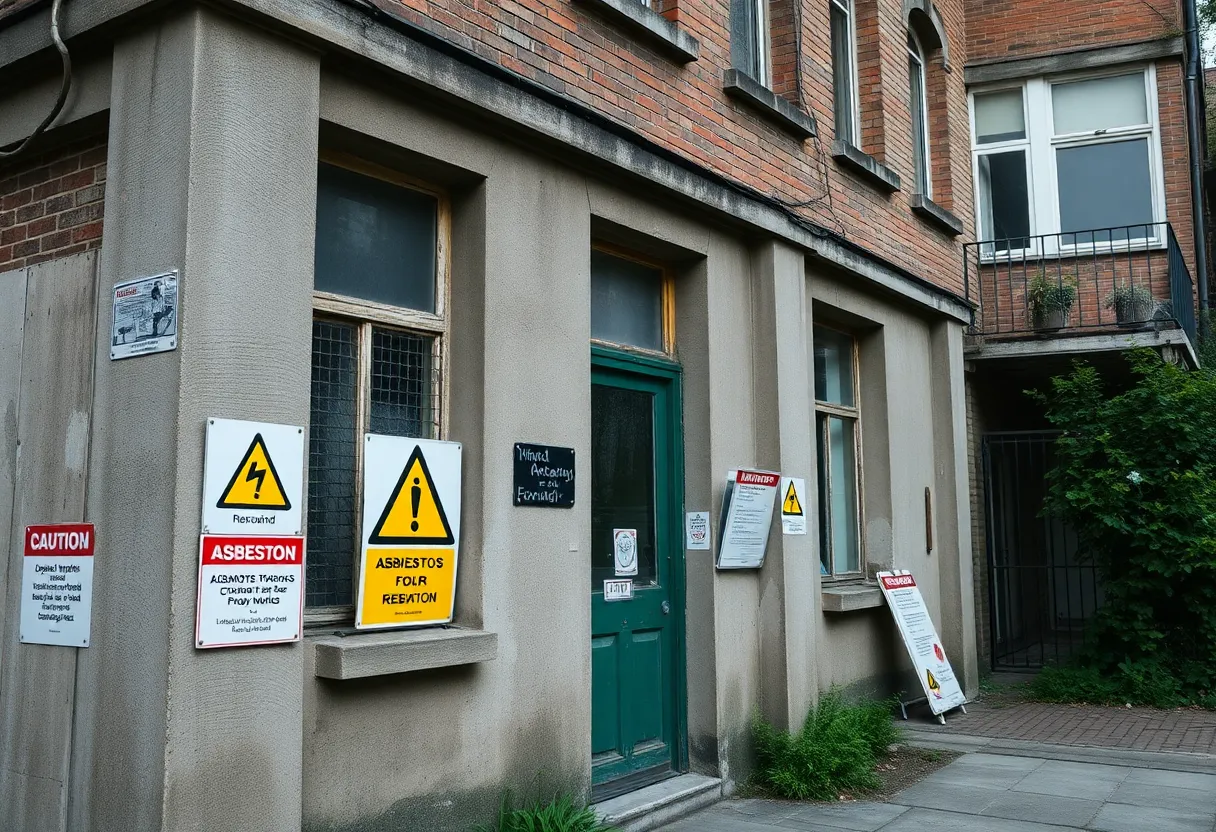News Summary
A cautionary tale highlights the risks of asbestos in older buildings during renovations, urging prospective homeowners to seek environmental assessments.
The Hidden Danger Lurking in Older Buildings: Asbestos Awareness in Renovation Projects
As the real estate market shifts and buyers increasingly turn to older buildings for their charm and affordability, an alarming oversight is emerging: the presence of asbestos. Recent events in Metro Vancouver have sparked urgent conversations about safety and responsibility for prospective homeowners.
Case Study: Unintentional Renovation Risks
In a recent turn of events, a couple, who we’ll refer to as Dawna and Geoff, made the exciting decision to purchase a condo situated in an older building in the Metro Vancouver area. However, their dreams of a modern home were abruptly interrupted when they started minor renovations. These included removing carpets and flooring, tackling that outdated popcorn ceiling, and knocking down a small wall in their unit, which did not involve any electrical or plumbing work.
Their excitement quickly turned to concern when the building’s strata council ordered them to cease renovations. The reason? An environmental report was required, which revealed that asbestos was found in the ceiling finish and possibly other components of the unit. Dawna and Geoff faced a situation no buyer expects— their diligent research did not uncover the presence of asbestos, as it had not been mentioned in the information certificate or the depreciation report.
The Duty to Disclose Asbestos
The couple was left pondering a crucial question: does the strata corporation hold a duty to inform potential buyers about asbestos reports? The standard Form B Information Certificate does outline essential documents such as depreciation reports and strata rules. However, additional reports like environmental assessments and building condition reports must be explicitly requested, a process that could lead to critical oversights.
Failures to disclose these reports might occur if they were finalized after the last depreciation report or if the strata did not have knowledge of the asbestos prior to the sale of the unit. Property buyers are encouraged to proactively request copies of any environmental assessments to reveal potential hazardous materials like asbestos before diving into renovation projects.
A Cautionary Tale on Asbestos Hazards
Asbestos poses significant health hazards, warranting adherence to strict protocols determined by WorkSafeBC. Those undertaking renovations are advised to follow asbestos abatement protocols diligently for their safety. It’s crucial to remember that asbestos can be found in various components of older buildings, ranging from flooring and ceiling finishes to wall assemblies and mechanical systems.
In light of this cautionary tale, aspiring homeowners are urged to approach renovations with a careful mindset. Recommendations for strata owners include not commencing any renovation without securing prior written approval, undertaking asbestos testing, and adhering to protocols for safe hazardous material removal.
Overall Housing Landscape Amidst Strata Considerations
The landscape for housing in Metro Vancouver is simultaneously facing pressures from rising development costs, inflation, and supply chain challenges. The regional district is currently contemplating extending the protection period from development cost charge (DCC) increases for in-stream projects from 12 months to either 18 or 24 months. This proposed change aims to assist developers while aligning with requirements for federal funding from the Canada Housing Infrastructure Fund for various infrastructure projects across the region.
Infrastructure initiatives have come into sharper focus, especially considering the $250 million earmarked by the federal government. Key projects include the expansion of the North Shore Wastewater Treatment Plant and the Surrey-Langley SkyTrain extension. With costs surging, this situation poses challenges for builders striving to maintain project timelines and budgets.
Conclusion: Stay Informed, Stay Safe
As the real estate market continues to evolve, buyers must navigate potential pitfalls, especially in older buildings that might house hidden dangers like asbestos. By demanding thorough documentation from strata corporations and adhering to safety protocols, homeowners can mitigate risks and ensure their renovation projects are performed in a safe environment. Remember, knowledge is power—never underestimate the importance of asking the right questions.
Deeper Dive: News & Info About This Topic
HERE Resources
Terminal Battle Against Mesothelioma: A Story of Resilience and a Call for Justice
The Controversial Legacy of Peter Angelos Unveiled by FBI Investigations
Johnson & Johnson Faces Legal Turmoil Over Talcum Powder Asbestos Claims
The Asbestos Litigation Crisis: A Heavy Toll on Small Businesses in California
Contractor Sentenced to 10 Years for Asbestos Fraud and Elder Abuse
The Looming Threat: Silicosis Claims on the Rise
Radiation Therapy for Mesothelioma Patients
Florida Mesothelioma Advocacy Efforts Intensify Amid Growing Health Concerns
Brake Wear Pollution Outweighs Diesel Exhaust in Lung Damage
The Asbestos Crisis: Corporate Accountability Under Fire
Additional Resources
- Storeys: Metro Vancouver DCC Protection Period
- Wikipedia: Asbestos
- Vancouver Sun: Infrastructure Projects in Metro Vancouver
- Google Search: Northern Wastewater Treatment Plant
- Environment Energy Leader: Vancouver Tackles Construction Plastic Waste
- Google Scholar: Construction Waste Management
- ConstructConnect: Metro Vancouver Construction Market Activity
- Encyclopedia Britannica: Construction



















